Contact Center Quality Management: Ensuring Exceptional Customer Service
In today’s competitive market, delivering excellent customer service is no longer optional, it’s essential. With customers expecting quick, efficient, and personalized interactions, businesses must ensure that their contact centers meet these high standards. Contact Center Quality Management is the process of monitoring and improving the performance of customer service teams to ensure that customer interactions consistently meet the desired level of service. Quality management is more than just keeping track of numbers; it involves creating a culture of continuous improvement, providing agents with the tools and training they need, and using data to make informed decisions. In this blog post, we will delve into the fundamentals of contact center quality management, its key components, the challenges it addresses, and best practices for implementation.
What is Contact Center Quality Management?
Contact Center Quality Management (CCQM) is the practice of ensuring that customer interactions, whether over the phone, via email, or through chat, meet predefined standards of service excellence. This system evaluates how well agents handle inquiries, the accuracy and efficiency of their responses, and how effectively customer concerns are resolved. The ultimate goal of CCQM is to enhance customer satisfaction, maintain operational efficiency, and ensure that the contact center meets key performance metrics such as First Call Resolution (FCR), Average Handling Time (AHT), and Customer Satisfaction Scores (CSAT). Quality management also ensures that customer service is consistent across all channels and aligns with the company’s values and objectives.
1. Key Components of Contact Center Quality Management:
To establish a strong quality management system, contact centers must integrate several key components. These elements form the foundation of an effective CCQM strategy:
a) Quality Assurance (QA) Framework
A QA framework outlines the criteria by which agent performance and customer interactions are evaluated. This typically includes a set of predefined standards, such as how well an agent listens to the customer, follows protocols, resolves issues, and demonstrates empathy. These criteria should be aligned with the organization’s goals and the expectations of customers. Once these standards are defined, managers use them to evaluate agent performance through call monitoring, screen recording, and reviewing transcripts of chat or email interactions. Regular assessments allow managers to identify areas for improvement and provide constructive feedback to agents.
b) Monitoring and Evaluation
Contact center quality management relies heavily on monitoring interactions between agents and customers. Managers can use various tools, such as live call monitoring, recorded call reviews, and sentiment analysis software, to observe how well agents perform. Evaluating these interactions helps to ensure that agents are adhering to company guidelines, using appropriate communication techniques, and resolving issues efficiently. Monitoring also allows managers to detect trends in customer complaints, enabling proactive solutions before they escalate.
c) Performance Metrics and KPIs
Tracking and analyzing performance metrics is a fundamental aspect of quality management. Key Performance Indicators (KPIs) such as Average Handling Time (AHT), First Call Resolution (FCR), and Net Promoter Score (NPS) are commonly used to measure agent performance and customer satisfaction. These metrics give insight into how well the contact center is meeting its goals. It’s important for contact centers to set realistic targets for these KPIs, balancing efficiency with customer satisfaction. For instance, while reducing AHT is important, it shouldn’t come at the cost of delivering rushed or incomplete service.
d) Agent Training and Development
Continuous training is an essential component of quality management in a contact center. Agents must be equipped with the skills to handle a variety of customer inquiries, including those that are more complex or emotionally charged. Regular training sessions ensure that agents are up to date on company policies, product updates, and new technology. Training should also be tailored to individual performance. After evaluations, managers can provide personalized coaching to address specific areas where agents may need improvement, whether it’s enhancing communication skills, learning new technologies, or managing customer complaints more effectively.
e) Customer Feedback
While internal assessments are crucial, customer feedback is one of the most valuable tools in quality management. Surveys, reviews, and social media comments offer direct insights into how customers perceive their interactions with the contact center. Implementing post-interaction surveys or follow-up feedback forms can give contact center managers a clearer understanding of where service gaps exist and how to improve the customer experience. This feedback should be used to inform changes in both agent performance and the overall contact center processes.
f) Technology Integration
Modern contact centers rely on advanced technologies such as Artificial Intelligence (AI), speech analytics, and Customer Relationship Management (CRM) systems to streamline operations. These tools help with data collection, performance monitoring, and providing real-time feedback to agents. AI-powered tools, for example, can analyze customer sentiment during interactions, identify trends in customer complaints, and recommend actions for improvement. Integrated systems also ensure that customer data is available in real-time, allowing agents to provide personalized service and resolve issues more efficiently.
3. Challenges in Contact Center Quality Management
While quality management is essential for any contact center, it is not without its challenges.
a) Maintaining Consistency Across Channels
In today’s omnichannel world, customers expect a seamless experience across various platforms—phone, email, chat, and social media. Ensuring that the same high-quality service is delivered across all these channels can be difficult. Each platform requires a different set of skills, and the interactions may vary in complexity. Managers must create a unified QA framework that applies to all communication channels, and agents must be trained to handle inquiries effectively, regardless of the medium.
b) Balancing Efficiency and Quality
Contact centers often face pressure to handle a high volume of interactions while maintaining a high level of service. Reducing Average Handling Time (AHT) or increasing the number of calls handled can sometimes compromise the quality of the customer experience. Balancing these two priorities is a challenge, and quality management should focus on finding the right mix—allowing agents enough time to address customer concerns without rushing or cutting corners.
c) Managing Agent Performance and Motivation
Monitoring and evaluating agents can sometimes lead to dissatisfaction if they feel overly scrutinized or unfairly judged. Managers must ensure that quality assessments are objective, transparent, and constructive. Providing positive feedback and recognizing good performance is just as important as addressing areas for improvement. Furthermore, engaging agents in the quality management process—by explaining how their performance impacts customer satisfaction and offering them opportunities for growth—can improve motivation and reduce turnover.
d) Adapting to Changing Customer Expectations
Customer expectations are constantly evolving, particularly with the rise of digital communication channels and AI-driven interactions. Contact centers must adapt to these changes by updating their quality management frameworks regularly. For instance, as customers increasingly demand faster, more personalized interactions, quality management must evolve to ensure agents are meeting these new expectations, whether by leveraging technology or improving training programs.
4. Best Practices for Contact Center Quality Management
Implementing an effective quality management system requires a proactive and strategic approach.
a) Create a Clear, Comprehensive QA Framework
A well-defined QA framework is the foundation of successful quality management. It should outline clear criteria for evaluating agent performance, with a focus on both customer satisfaction and operational efficiency. Ensure that agents understand these criteria and know how they will be evaluated.
b) Leverage Technology for Continuous Improvement
Utilizing advanced technologies like AI, analytics, and CRM systems can streamline the evaluation process and provide real-time insights. Automation tools can help monitor interactions more efficiently and flag potential issues before they impact customer satisfaction.
c) Incorporate Customer Feedback
Regularly seek out customer feedback through surveys and reviews to gain a complete understanding of how your contact center is performing. Use this feedback to identify service gaps and make targeted improvements.
d) Provide Ongoing Training and Support
Ensure that agents receive continuous training and support to stay up to date with company policies, product knowledge, and customer service techniques. Regular coaching sessions, based on performance evaluations, can help agents develop the skills they need to succeed.
e) Encourage a Culture of Continuous Improvement
Quality management should be an ongoing process, not a one-time assessment. Encourage a culture of continuous improvement by involving agents in discussions about performance and actively seeking out ways to enhance customer service.
Conclusion :
Contact Center Quality Management is essential for maintaining high levels of customer satisfaction and ensuring efficient, consistent service across all communication channels. By focusing on key components like QA frameworks, performance monitoring, agent training, and customer feedback, businesses can create a system that not only meets but exceeds customer expectations. By overcoming challenges such as maintaining consistency across channels and balancing efficiency with quality, contact centers can create a culture of continuous improvement that drives long-term success. The end result is a customer service operation that adds real value to the business and strengthens relationships with customers.

